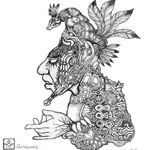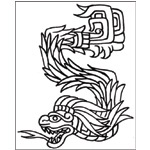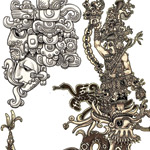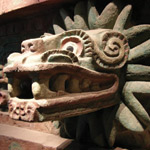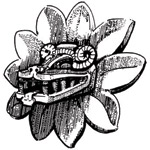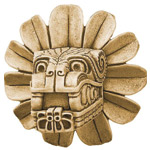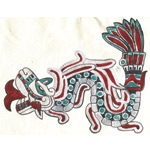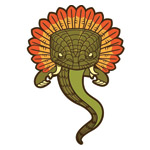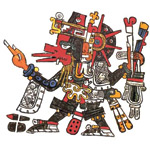
Also know as the Feathered Serpent of Ancient Mexico. Quetzalcoatl was a god of such importance and power that nearly no aspect of everyday life seemed to go untouched by him. As a historical figure, his actions would nor could not be contained by the History and thus eventually evolved into myth. And as a legend, he would signal the end of mortal kingship. An interesting phenomenon that distinguished Quetzalcoatl is that despite the fact he is not the most powerful of gods within the Mesoamerican pantheon, or one of the eldest, he is nonetheless an integral part of the system. This was partially accomplished by his ability to integrate himself so securely to attributes of his fellow brethren, to such an extent that it is virtually impossible to tell if Quetzalcoatl was the true originator or visa versa. Hence, to establish a single definitive personality to a god is extremely difficult.
The name "Quetzalcoatl" literally means quetzal-bird snake or serpent with feathers (Amphitere) of the Resplendent Quetzal (which implies something divine or precious) in the Nahuatl language. The meaning of his local name in other Mesoamerican languages is similar. The Maya of Mexico knew him as Kukulkán; the Quiché-Maya of Guatemala, as Gukumatz.
The Feathered Serpent deity was important in art and religion in most of Mesoamerica for close to 2,000 years, from the Pre-Classic era until the Spanish conquest. Civilizations worshipping the Feathered Serpent included the Olmec, Mixtec, Toltec, Aztec, who adopted it from the people of Teotihuacan, and the Maya.
See Also::Aztec tattoo designs, Latino Tattoo index.


